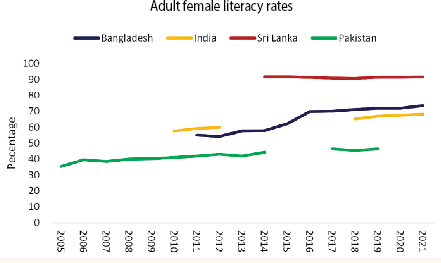EIDAL Kumar, 60, a resident of Nagarparkar in Thar, gets worried when the rain doesn’t come on time, as it means he would not be able to sow millet and cluster bean crops.
Pastoral life in Tharparkar revolves around rainfall, which has become too erratic, thanks to changing weather patterns in the region. Droughts, therefore, occur more often, triggering a mass migration.
The two crops mentioned above mainly run the cycle of the economy of the arid region. Kumar, like others, is confident that promoting an adequately planned rainwater harvesting could improve the situation.
Locals store rainwater for consumption and livestock through conventional approaches. The average value of salt in Thar’s groundwater varies between 3,000 and 5,000 parts per million (ppm), which makes it unfit for drinking, but the community is largely dependent on it.
A recent study found the salt content to be as high as 9,000ppm in Chhachhro taluka. The storage of rainwater, therefore, is crucial for catering to drinking water needs of the locals.
Krishan Sharma, a development sector activist in Mithi, says that the recently built recharge dams in Nagarparkar have benefited the community immensely, considering the fact that dynamics of water availability in this part of Thar are entirely different from the rest of the desert.
Farmers like Hanif Kumbhar reaped a better harvest of onion crop last year near the Ranpur dam because heavy rains in 2016 and this year had filled up these dams.
A proposal for mapping the entire arid region was submitted to the federal government after hundreds of newborns died in Tharparkar in 2014 owing to malnourishment. The file has been gathering dust since then
The Sindh Small Dams Organisation of the provincial irrigation department has been building recharge and storage dams across the province. So far, 44 small dams have been completed and 30 are under construction to irrigate around 155,000 acres of land. In all, 70 recharge and four storage dams are to be built by the organisation.
“If a dam in our village [Chanida] is filled like the Ranpur [dam], we can cultivate the onion crop on 200 acres,” Eidal Kumar tells this writer at the dam’s site in Nagarparkar. “Whatever water is currently available [in the Chanida dam] is used by livestock,” he adds.
Recently, the multibillion-rupee Sindh Resilience Project was launched under which three small dams in Nagarparkar and 12 in Kohistan belt are to be built.
The World Bank-funded project aims to mitigate flood and drought risks in selected areas and strengthen Sindh’s capacity to manage natural disasters. The Sindh government would share 20pc cost of the project.
Of the Rs10bn cost, 80pc would be spent on small dams and 10 main river Indus’ dykes which needed refurbishment after recent floods.
The accumulation of rainwater replenishes/recharges groundwater aquifers and then water is lifted through pumps by growers for rearing animals and cultivating crops.
The sandy soil of Thar absorbs water quickly, but water table in groundwater aquifers around such dams gets improved considerably.
“At some sites [of dams], groundwater level is recorded at 20 feet which was 100 feet before it rained in that area,” says Zahid Sheikh, an irrigation officer who was looking after small dams’ construction until recently.
Besides recharge or storage dams, spate irrigation is another technique applied in areas located on the right bank of the Indus river such as Jamshoro, Dadu, Qambar-Shahdadkot and districts like Thatta, Khairpur and Malir.
According to an old study conducted by the National Engineering Services of Pakistan, around 1.4 million acres could be brought under spate irrigation for cropping in Sindh, which has such 33 sites for water conservation of hill torrents. Small farmers of these areas have remained dependent on hill torrents during Kharif crops.
Ashfaq Soomro of Research and Development Foundation said according to their study, improved structures of ponds can serve to reduce seepage and evaporation losses.
Unfortunately, Sindh has not carried out a geographical study to develop comprehensive data set for a planned effective intervention. “Generally, communities in such difficult areas are left to deal with problems on their own,” commented an expert.
Ahmad Zeeshan Bhatti of the Islamabad-based Pakistan Council of Research in Water Resources says a detailed mapping of Tharparkar is needed for determining potential sites to build rainwater harvesting. Since Thar’s soil is sandy, it increases the seepage ratio. Road catchment could be built to accelerate the pace of rainwater’s runoff after a cost analysis.
India has installed solar panels in water bodies to block sunlight that otherwise accelerates the pace of evaporation. The wind velocity could be controlled by raising hedges around dams, he said.
A proposal for mapping entire arid region was submitted to the federal government after hundreds of newborns died in Tharparkar in 2014 owing to malnourishment. The file has been gathering dust since then.
Published in Dawn, The Business and Finance Weekly, December 4th, 2017


































